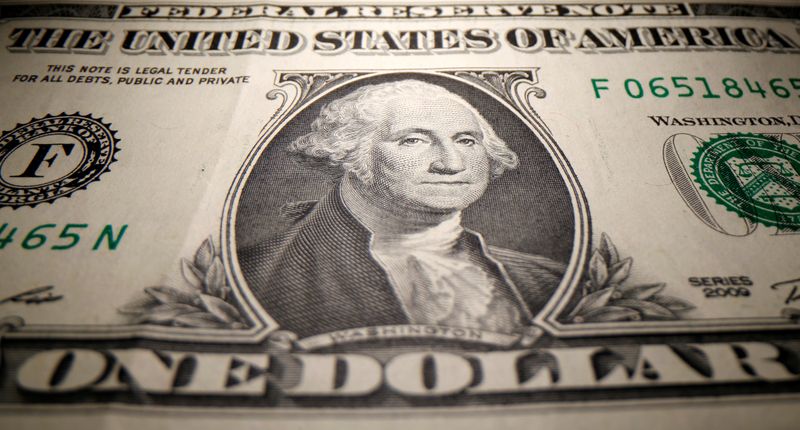Asian currencies weakened sharply on Monday, with the Chinese yuan nearing a record low in offshore trade as the dollar rallied after U.S. President Donald Trump delivered on his threat of more trade tariffs.
Regional currencies were caught in a global sell-off in risk-driven assets after Trump over the weekend announced 25% import tariffs on Canada and Mexico, and a 10% duty on China.
All three countries vowed retaliation, marking the start of a renewed global trade war.
To this end, trade-exposed Asian currencies were the worst performers on Monday, with the Singapore dollar’s USD/SGD pair surging 0.8%, while the Australian dollar’s AUD/USD pair slid 1.8% to a near five-year low.
The trade-sensitive South Korean won’s USD/KRW pair surged 0.9%, while the Indian rupee’s USD/INR pair rose 0.4% to a record high of 86.920 rupees.
Japan’s yen weakened slightly less than its peers due to a hawkish Bank of Japan and its status as a safe haven bid. The USD/JPY pair rose 0.3%.
Asian currencies were also pressured by strong U.S. inflation data which, coupled with Trump’s tariffs, pointed to fewer interest rate cuts in the coming months.
Chinese yuan near record low in offshore trade
Mainland Chinese markets remained closed for the week-long Lunar New Year holiday, with trade only set to resume on Tuesday.
But the yuan weakened to near record lows in offshore trade, with the USD/CNH pair rising 0.5% to 7.3536 yuan.
Trump hit China with a 10% import tariff- a move that bodes poorly for China’s export-heavy economy. But given that China has trimmed its trade exposure to the U.S. in recent years, analysts bet that the economic impact of the new tariffs may not be as dire as initially feared.
3rd party Ad. Not an offer or recommendation by Investing.com. See disclosure here or remove ads.
Beijing decried Trump’s tariffs, and vowed retaliation. The country is also expected to dole out bumper stimulus measures to offset the economic impact of Trump’s tariffs.
Private purchasing managers index data showed Chinese business activity remained soft in January. The Caixin manufacturing PMI read below expectations for the month, although it just managed to stay in expansion territory.
Still, analysts cautioned that Trump’s willingness to carry out his hawkish tariff agenda heralded higher duties in the coming months.
Analysts at Wolfe Research said the President could eventually impose his threatened 60% trade duties on China.
Dollar soars as Trump tariffs point to inflation bump, fewer rate cuts
The dollar index and dollar index futures both surged about 1.3% in Asian trade, reaching a near one-month peak. The greenback was also back in sight of an over two-year high hit in January.
Trump’s tariffs- which will take effect from Tuesday- are expected to be inflationary, given that they will be paid by U.S. importers. Sticky inflation in turn is expected to give the Federal Reserve less impetus to cut interest rates sooner, while also pressuring the U.S. economy.
PCE price index data- the Fed’s preferred inflation gauge- rose as expected in December, data showed on Friday. The print rose further above the Fed’s 2% annual target, and also factored into expectations that U.S. interest rates will remain high for longer.



